Nakatsugawa:History,Culuture,and,Local Food
中津川市 The City of Nakatsugawa
Nakatsugawa flourished as a merchant town during the Edo period (1603–1867). Much of its traditional culture has been preserved, including one of its post stations along the Nakasendo highway and a ji-kabuki playhouse called Kashimo Meijiza Theater. Today, Naegi Castle and the Naegi Toyama Memorial Museum are Nakatsugawa’s top tourist attractions along with the post station area called Nakatsugawa-juku.
Nakatsugawa-juku is a short 10-minute walk from JR Nakatsugawa Station. It was a checkpoint on the Nakasendo highway that connected Edo (modern-day Tokyo) to Kyoto during the Edo period. Most traces of the old highway have been lost, but a section of the original road has been preserved in this historic district. The road is lined with sake shops, confectionery stores, and restaurants housed in traditional wooden buildings. Nakatsugawa also houses the Nakasendo Historical Museum, which displays artifacts from the town’s rich history. The museum’s exhibits include documents, wood-block prints, paintings, and other materials concerning the Nakasendo.
Another highlight of the city is the Kashimo Meijiza Theater, which is used to stage a form of local kabuki, called ji-kabuki, performed by amateur actors of the community.
A popular scenic attraction can be found in Tsukechi Gorge. Waterfalls and clear streams flow through its rugged and rocky terrain and lush foliage fills the valley with color from spring through late autumn.
宿場町中津川宿 Post Station Nakatsugawa-juku
Step back in time to the Edo period (1603–1867) with a walk through the historic townscape of Nakatsugawa-juku. This town was the 45th of 69 post stations on the Nakasendo highway. The Nakasendo, also known as the “Samurai Road,” was one of five major highways that connected Edo (modern-day Tokyo) to Kyoto. Most of the original walking paths have been lost, but in some areas, such as Nakatsugawa, parts of the original road remain unchanged.
In the past, Nakatsugawa prospered as a key junction close to the center of the country. Nakatsugawa-juku still has wooden buildings preserved from the Edo period, including the Soga House (formerly the village mayor’s house). Architectural features, like roofs with raised edges to stop fires from spreading, reflect its wealth and status as one of the premier towns in the Tono region (southeastern part of Gifu Prefecture).
A walking tour through the backstreets and narrow alleys of Nakatsugawa-juku allows visitors to experience the sights of the original Nakasendo.
The walking tour also includes a visit to Hazama Shuzo, a local sake brewery, and a Japanese sweet shop that serves a local chestnut confection called kurikinton. Arrangements can also be made to visit other historical buildings in the area, such as the wakihonjin (an inn for high-ranking travelers).
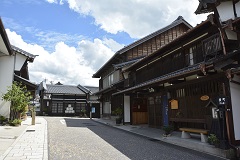
地歌舞伎 Kabuki Community Theater (Ji-Kabuki)
The phrase ji-kabuki literally means “local kabuki” and is performed by amateur actors in communities outside the formal kabuki theater circuit. The practice developed in conjunction with the rise of kabuki’s popularity.
The Spread of Local Kabuki
Kabuki is a traditional performing art that originated in populous areas during the seventeenth century. It is known for its colorful costumes, makeup, and dramatic performances, which combine acting, dancing, and music. It was often performed in Edo (now Tokyo), Osaka, and Kyoto. As its popularity spread during the Edo period (1603–1867), rural communities began inviting famous kabuki actors to perform for them as well. Inspired by these professional performances and their love of kabuki, many smaller communities launched their own theaters, and ji-kabuki was born. Rather than watch other people perform, the townspeople and farmers wanted to appear on stage themselves.
The Birth of Ji-kabuki
Ji-kabuki took root in the Tono region (the southeastern part of Gifu Prefecture), particularly in Nakatsugawa. Many ji-kabuki playhouses were built and flourished in the city. In fact, the popularity of ji-kabuki reached such a fever pitch that the Tokugawa government banned performances in some areas to stop it from distracting townspeople and farmers from their work.
Strong Community Spirit
Ji-kabuki is a way for communities to celebrate their culture and work together by taking on various roles to put on a show. These include actors, musicians, and stagehands. The performances help keep the traditions of kabuki alive and allow people from different backgrounds to participate in and enjoy this unique form of theater.
A key part of ji-kabuki is the interaction between the actors and spectators. Grateful patrons throw ohineri (coins wrapped in paper) and cheer on the actors, encouraging energetic performances. The shared nature of the experience creates a sense of unity for all parties involved.
Ji-kabuki Playhouses in Nakatsugawa
There are currently three playhouses in the area keeping this rare art form alive. One is the Kashimo Meijiza Theater. This theater-style playhouse built by volunteers in 1894 is in the small farming village of Kashimo. Visitors can go behind the scenes to learn the secrets behind ji-kabuki performances and explore the building, from the main hall to the basement, where the revolving stage is operated. The colorful back curtains of the theater were a founding gift from the women of the village and are dyed with their family names.
Currently there are only around 200 groups that continue to preserve ji-kabuki in Japan. Thirty of them can be found in Gifu Prefecture, making it the most active region for ji-kabuki in the country. In 1972, the Kashimo Meijiza Theater was designated an Important Tangible Folk Cultural Property of Gifu Prefecture.
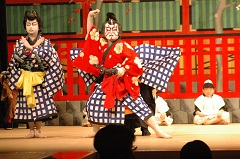
伝統の栗きんとん Traditional Kurikinton Chestnut Sweet
Nakatsugawa is said to be the birthplace of kurikinton, a Japanese chestnut sweet. The town takes great pride in this popular autumn treat, which is made using chestnuts collected in the foothills of mountains near the city. Recipes differ between shops specializing in Japanese sweets (wagashi), and each version offers a unique flavor and texture.
Different Types of Kurikinton
There are two different types of kurikinton. One is a sweet, sticky version that is served as part of traditional Japanese New Year dishes osechi ryori) and the other is a sweet paste that originated in Nakatsugawa. The kurikinton served at New Year’s is typically sweet-simmered chestnuts coated in sweet potato paste.
The sweet paste confection served in Nakatsugawa is made by boiling or steaming fresh chestnuts until tender. The softened chestnuts are then mashed and mixed with sugar, which creates a sweet, smooth paste. This paste is shaped using a chakin tea cloth or gauze cloth into small, bite-sized pieces that resemble chestnuts. The paste has a smooth texture and subtle sweet taste that pairs well with the slightly bitter flavor of Japanese green tea.
Origins and History of Kurikinton in Nakatsugawa
Nakatsugawa is known for its abundant harvest of chestnuts, which were often used to make dishes and sweets. When the Nakasendo highway was built in the early Edo period (1603–1867) to connect Edo (modern-day Tokyo) to Kyoto, many post stations were built along the route to provide accommodations for those passing through, and Nakatsugawa-juku was the 45th post station. The tea shops at the post stations near Nakatsugawa mashed up chestnuts to make sweets to serve with tea to weary travelers and are credited as the first places to sell kurikinton.
Around 1900, kurikinton started to appear in specialized sweet shops around Nakatsugawa. Today the area is home to many long-established stores selling this local confection, including Suya and Kawakamiya. A stone monument was built in front of Nakatsugawa Station to honor the city’s history as the birthplace of kurikinton.
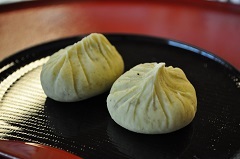
This English-language text was created by the Japan Tourism Agency.
(この英語解説文は観光庁の地域観光資源の多言語解説整備事業で作成しました。)
この記事に関するお問い合わせ先
商工観光部観光課
電話番号:0573-66-1111(内線4272・4273)
メールによるお問い合わせ







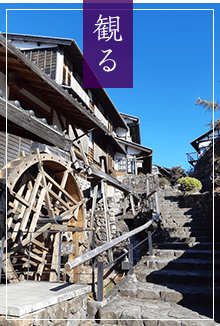
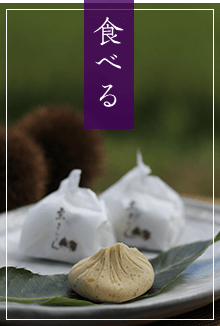
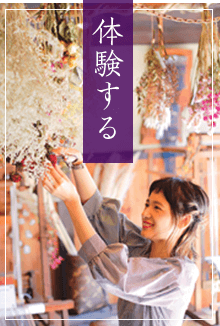
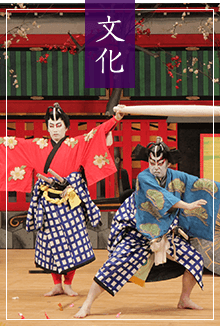
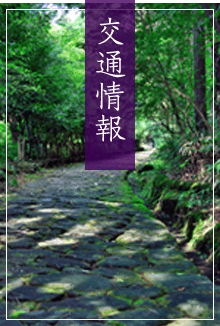
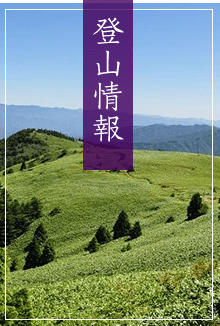
更新日:2025年03月05日